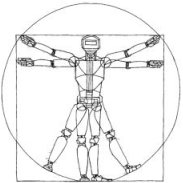Robotics: Science and Systems IV
Super-Flexible Skin Sensors Embedded on the Whole Body, Self-Organizing Based on Haptic Interactions
Tomoyuki Noda, Takahiro Miyashita, Hiroshi Ishiguro, Norihiro HagitaAbstract: Robots are becoming more ubiquitous in our daily lives, humans and robots are working in ever-close physical proximity to each other. Due to this proximity, there is increased potential for robots to inadvertently harm users by striking them. Physical nearness also increases the need for robots to be able to interpret the meaning of touch (or haptic) feedback from humans. Covering the whole robot body with malleable tactile sensors allows us to address both of these concerns. First, soft, compliant surfaces are less dangerous in the event of accidental human contact. Second, flexible sensors are capable of distinguishing many different types of touch (e.g., hard v.s. gentle stroking). This is especially useful, as soft skin actually invites more natural types of touch interaction from humans. Unfortunately, processing information from these types of sensors presents a difficult challenge, high density of tactile sensor elements increase an administration cost of sensor configuration. To get a better understanding of this domain, we performed several classification and visualization tasks on large set of recorded interactions between a human and a robot equipped with tactile sensors covering the whole body. First, we found the system can acquire a boundary of sensors to be used in distributed processing, called self-organizing tactile sensors, reducing the administration cost. Using only 15% of selected feature space based on cross-correlation between tactile sensors, we found that interaction scenarios could be successfully classified by applying our proposed method, achieving performance of 80% in a 15-way forced choice task. We also found that, in many categories of touch interactions, their data set distribution converge to limited subspaces composed mainly of adjacent sensor pairs. These promising results suggest that our proposed method can be effectively used for automatic analysis of touch behaviors in more complex tasks.
Bibtex:
@INPROCEEDINGS{Noda-RSS08,
AUTHOR = {Tomoyuki Noda, Takahiro Miyashita, Hiroshi Ishiguro, Norihiro Hagita},
TITLE = {Super-Flexible Skin Sensors Embedded on the Whole Body, Self-Organizing Based on Haptic Interactions},
BOOKTITLE = {Proceedings of Robotics: Science and Systems IV},
YEAR = {2008},
ADDRESS = {Zurich, Switzerland},
MONTH = {June},
DOI = {10.15607/RSS.2008.IV.038}
}
